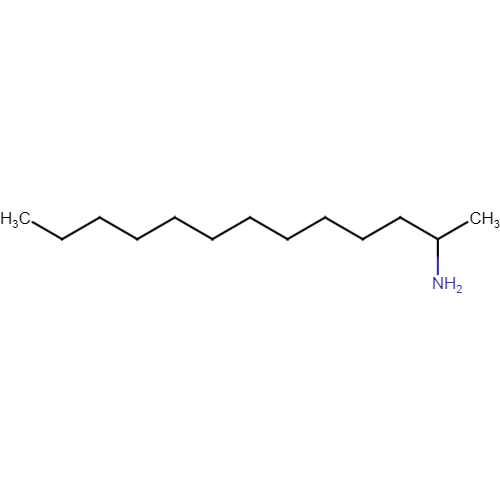1-methyldodecylamine
| Compound Structure: |

|
||||||||||||||||||||||||||||||||||||||
|---|---|---|---|---|---|---|---|---|---|---|---|---|---|---|---|---|---|---|---|---|---|---|---|---|---|---|---|---|---|---|---|---|---|---|---|---|---|---|---|
| Synonyms: | 2-Aminotridecane;2-Tridecanamine;13205-57-7;tridecan-2-amine;1-Methyldodecylamine;2-amino-tridecane | ||||||||||||||||||||||||||||||||||||||
| Compound ID: | NMPC-099 | ||||||||||||||||||||||||||||||||||||||
| PubChem ID: | |||||||||||||||||||||||||||||||||||||||
| Molecular Formula: | C13H29N | ||||||||||||||||||||||||||||||||||||||
| Canonical SMILES: | CCCCCCCCCCCC(C)N | ||||||||||||||||||||||||||||||||||||||
| InChIKey: | WCLHZVGJULAEJH-UHFFFAOYSA-N | ||||||||||||||||||||||||||||||||||||||
| About the compound: | GHS Hazard Statements • H226 (99.64%): Flammable liquid and vapor [Warning Flammable liquids] • H301+H311 (14.55%): Toxic if swallowed or in contact with skin [Danger Acute toxicity, oral; acute toxicity, dermal] • H301 (49.45%): Toxic if swallowed [Danger Acute toxicity, oral] • H302 (50.55%): Harmful if swallowed [Warning Acute toxicity, oral] • H311 (66.55%): Toxic in contact with skin [Danger Acute toxicity, dermal] • H312 (33.09%): Harmful in contact with skin [Warning Acute toxicity, dermal] • H314 (100%): Causes severe skin burns and eye damage [Danger Skin corrosion/irritation] • H318 (50.91%): Causes serious eye damage [Danger Serious eye damage/eye irritation] • H411 (30.18%): Toxic to aquatic life with long lasting effects [Hazardous to the aquatic environment, long-term hazard] • H412 (33.82%): Harmful to aquatic life with long lasting effects [Hazardous to the aquatic environment, long-term hazard] |
||||||||||||||||||||||||||||||||||||||
| Properties: |
Chemical and Physical Properties
Source: PubChem |
||||||||||||||||||||||||||||||||||||||
| Source Species: |
Rauvolfia vomitoria |